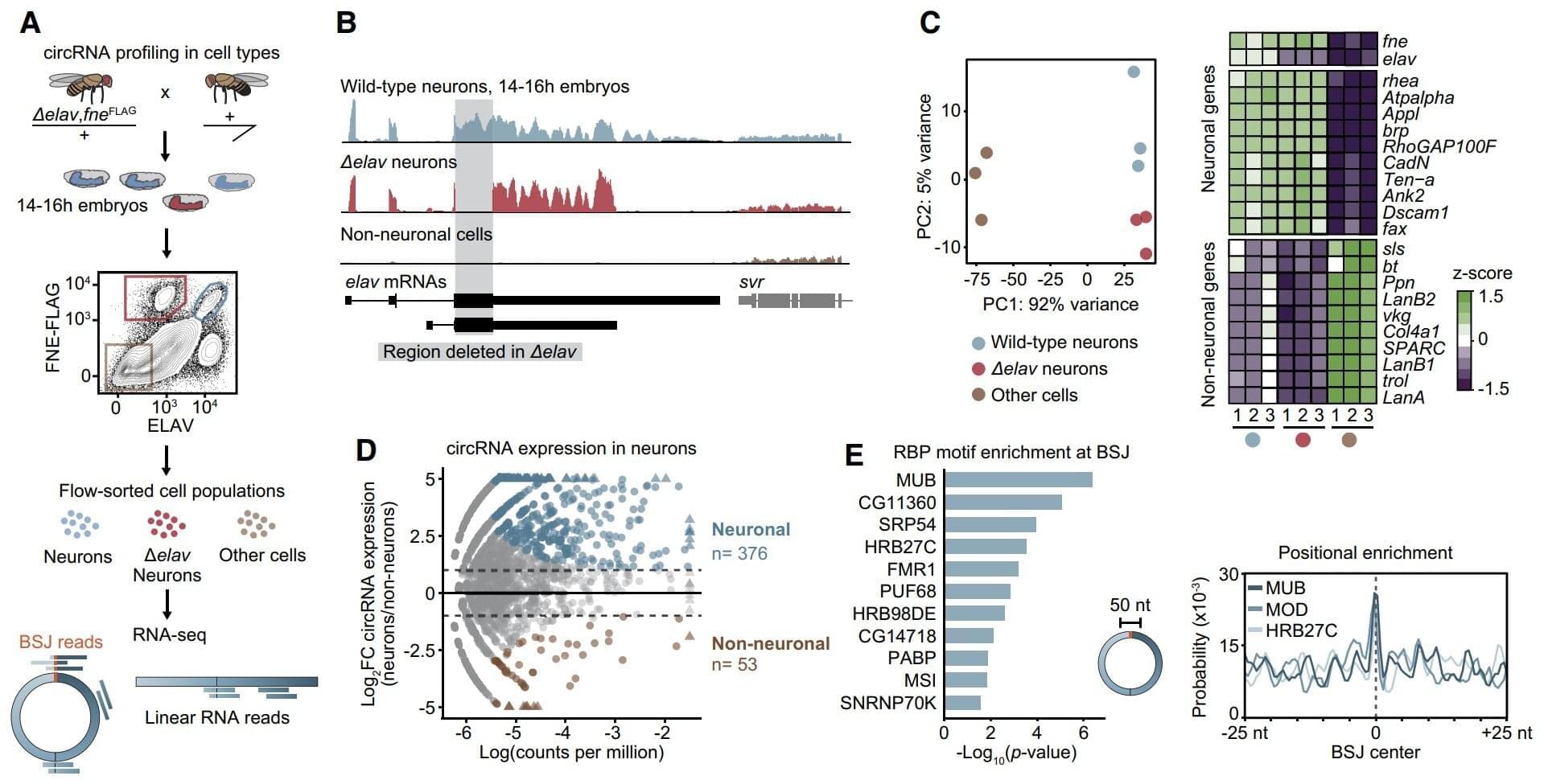Deep within our nerve cells, a molecule is at work that has no beginning and no end. Instead of a straight chain, as is common for most RNA strands, it forms a closed loop. Known as circular RNAs (circRNAs), these molecules are crucial for development, thought, and synaptic function, yet their high prevalence in neurons has long been a scientific mystery. How does the brain produce so many of them?
Now, Max Planck researchers from Freiburg have discovered a crucial mechanism that explains the remarkable abundance of circRNAs in the nervous system. Published in Genes & Development, the study reveals that the protein ELAV acts as a global master switch for the production of these molecules.
CircRNAs are found across all life forms. They are expressed in specific patterns during different developmental stages and in different cells—especially abundant in cells of the nervous system. While their roles are not as well-studied as normal, linear RNAs, circRNAs are known to be important in brain development, cognition, and even in conditions like neurodegeneration and addiction.
